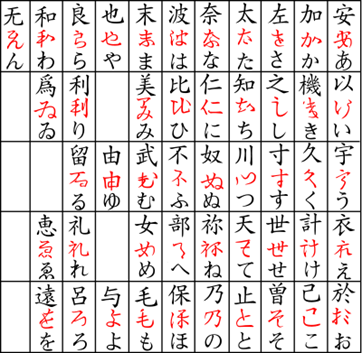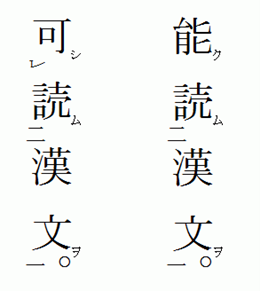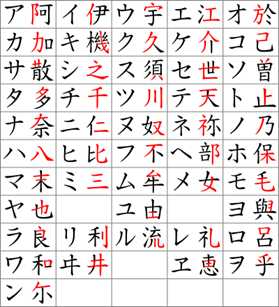The Japanese Writing System
Moon runes and how they work. The Japanese writing system is one of the first hurdles that any learner must learn to overcome. It is also quite unique in the fact that it simultaneously uses three different scripts. In this article I will try to give some insights on how it came to be this way.
What are Kanji
It all starts with Kanji. They were the first writing system that Japanese used, and they are the origin of the other systems that came after. “Kanji are the adopted logographic Chinese characters that are used in the Japanese writing system.”, says Wikipedia. In other words, Kanji are written characters that represent some sort of meaning. That is what logographic means. Also, they are indeed adopted from Chinese which means that Kanji is not a system that is native to Japanese. This is something you will realize one way or another over time as you study Kanji. There is a sense that they were kind of “glued” on to Japanese as an afterthought. That is not to say that they are not firmly part of the modern usage of Japanese, quite the opposite. In fact, they are so important that you basically can’t get around learning them, if you want to read any Japanese. That afterthought nature is more something you notice through terminology such as “Chinese reading” and “Japanese reading”, which very much imply a connection back to Chinese, or how 49% of words used in Japanese are considered
The history of Kanji (and the Kana)
As far as we know, Japan started importing goods from China with Chinese characters on them as far back as 2000 years ago. At that point, the people in Japan that receiving those goods likely had no comprehension of those characters. It wasn’t until about 500 years later that the literacy of Chinese increased at the Japanese court and more and more of the correspondence between Japan and China took place in written Chinese. Around this time, Japanese still had no written form. All text was written and read in Chinese.

In the Heian period (794-1185 AD) the


If you know your Kanji readings, you will be able to deduce how one can get from the characters to the 仮名. Take 仁 to ニ for example. 仁 has the Chinese reading ニ.
The name 仮名 (lit. “borrowed name,” "temporary name" or “false name”) was given as a counterpart to
The popularization of the Kana
There were several problems and limitations with using Chinese writing to express Japanese. Japanese relies heavily on conjugation for tense and other grammatical functions. Chinese does not. Furthermore, Japanese uses particles to indicate things like subjects or objects, whereas Chinese relies almost entirely on a fixed sentence order to do the same thing. All this meant that Chinese script had to be annotated heavily to be usable for Japanese writing and a lot of study was required to learn it. The 仮名 proved to be a much simpler way to write things like
The formalization of the Kana
Japan was not a unified country for most of its history. It wasn’t until the 1600s when Japan was first united under the Tokugawa shogunate. It was in this period when first efforts were made to reform the writing system, however, in the end it was a continuous process, and it took until the 1900s to properly find a standard for the 平仮名. That reform solidified one 平仮名 per syllable and separated the alternate ones into a set which is now called
Some of the sources I used:
- https://www.sljfaq.org/afaq/originofkana.html
- https://medium.com/pomme-de-terre/the-sexist-history-behind-the-development-of-hiragana-e9f5676ab1f9
- https://en.wikipedia.org/wiki/Kana
Thanks also to Tentenguy#4252 for giving some helpful inputs!
